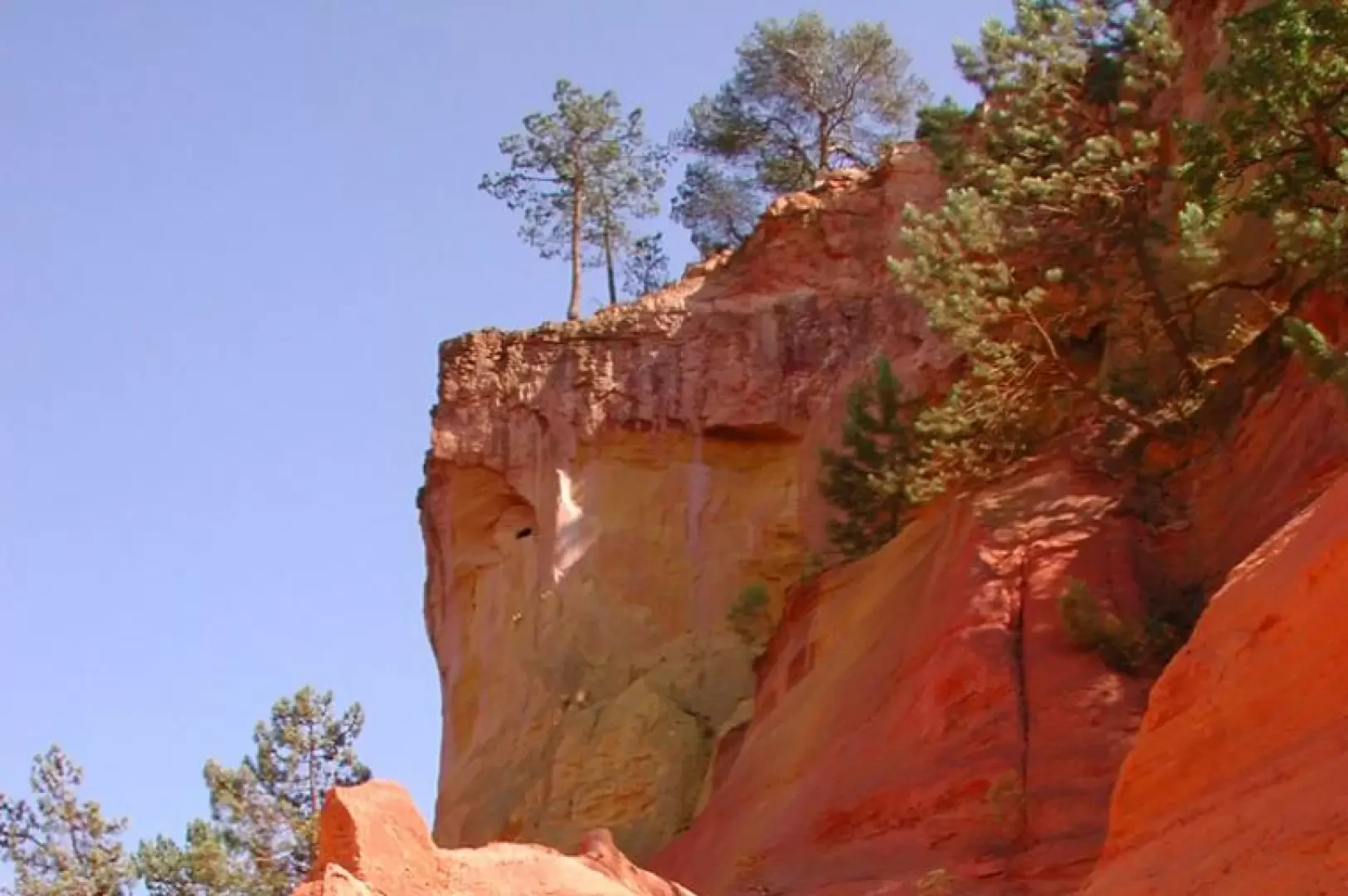Chemin des Ocres

Introduction
The village of Roussillon has a thousand inhabitants, and is situated at 343m, in the centre of one of the most important ochre deposits in the world (bauxite). It is a unique place, in which the combination of clayey sands and iron oxides creates an infinity of shades; water runoff and wind have done the rest; the whole village is coloured in the tones of the sands, a real gem, which should be visited at your leisure, with its small shops and ateliers, and its delightful little nooks and crannies; then take the signposted path leading to the Chaussée des Géants, which is full of explanatory signs; we visited it in early July after 4 p.m., an ideal time, because the slanting rays of the sun light up the ochres with fantastic lights. Visiting time should be calculated as at least two and a half hours, one for the village, one for the ochre trail, the rest for the walk from the car park to the village and then to the ochres and back.
Description
Leave the car in the pay car park, and continue on foot towards the centre. Narrow streets, lined with delightful shops and the homes of locals, lead us to the church and the terrace from which there is a wonderful view of the village, passing under a door with a curious staircase that climbs upwards. Around us is Mont Ventoux, the Luberon region in general, and the reddish hills of Roussillon and Rustrel. As we take our time, we discover enchanting corners; as we descend, we continue along the path around the top of the village, towards the southwest, and then retrace our steps and head for the ochre path; along the way, there are many tables explaining why these clays are coloured, and documenting their formation and use. In the meantime, we reach the entrance to the path, whose route is fee-paying. There are two routes, a shorter one, lasting about half an hour, and a longer one, an hour's walk if you take the time to read all the tables. From the very first steps you find yourself in a fantastic world of incredible colours; the photos I have attached are not retouched, they are just that colourful. The path, equipped with bridges and steps, leads us into the very green forest, which creates an extraordinary contrast with the brightly coloured ochres, changing from pale pink to purple, from yellow to orange and red. The path with the yellow markings is shorter, the one with the red markings, longer; having reached the first fork, the return point for those who have chosen to take the short route, we continue on steps and look out over a series of clay-red pinnacles, towering among the green trees. The signposted route, with a wide turn, descends into the forest and then climbs back up to the starting point, giving us more fantastic views. After a last glance at the village as a whole, with the light becoming more and more grazing, we enter the car park on the left and look southwards for a small opening that takes us to the street below, which we follow to the right until we reach the car park, partially retracing the ascent route.